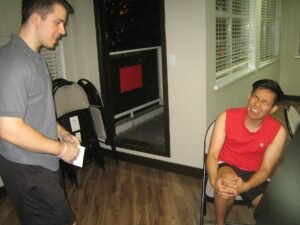It is a known fact that falls can put any individual at risk for injury. Preventing falls might not seem an interesting topic but it is vital. As individuals get older, certain health conditions and physical changes as well as intake of medications can increase the risk for falls.
In reality, falls are considered as the main cause of injury among the elderly. Understandably, fear of falling should not limit you from living your life to the fullest though. This is why it is important to take into consideration fall preventing tactics. It is important to initially consult your doctor so that a fall prevention plan can be provided.

Physical activities
Always remember that physical activities can help prevent falls. As long as it is approved by your doctor, you can consider activities such as tai chi, walking and water workouts. These activities can help minimize your risk for falls by improving balance, strength, flexibility and coordination.
If you avoid physical activity just because you are afraid it will increase your risk for falls, it is best to inform your doctor. Your doctor can recommend monitored exercise routines or even refer you to a physical therapist. A customized exercise routine can be provided that will help improve the flexibility, balance, gait and muscular strength.
Appropriate footwear
As part of your fall prevention plan, it is best to change your footwear. Shoes that have slick soles, high heels and floppy slippers can easily make you fall. It is important to wear shoes that properly fit especially those that have non-skid soles and are sturdily built.
Home environment
At home, there are hazards around such as in the living room, bathroom, kitchen, bedroom, stairways and hallways. There are certain steps that can make your home safer.
- Remove cluttered electrical cords, boxes and phone cords from the hallways.
- Transfer magazine racks, coffee tables and plant stands away from regularly used areas in the house.
- If there are spills on the floor, it should be cleaned right away.
- Loose rugs should be secured using an anti-slip support or simply remove them from your home.
- Dishes, food and clothing should be stored within easy reach.
- Non-slip mats must be used in the shower or bathtub.
- Night lights should be installed in the bedroom, hallways and bathrooms.
- Create a clear path to the light switches that are not located close to the room entrances.
- Flashlights must be kept in easy to reach places.
Assistive devices
Your doctor can also recommend the use of assistive devices such as a walker or cane for support as well as keeping the individual steady. Other assistive devices that can be used include:
- Grab bars in the tub or shower
- Hand rails on both sides of the stairs
- An elevated toilet seat or one that is equipped with armrests
- A durable and sturdy seat made of plastic for the tub or shower area
